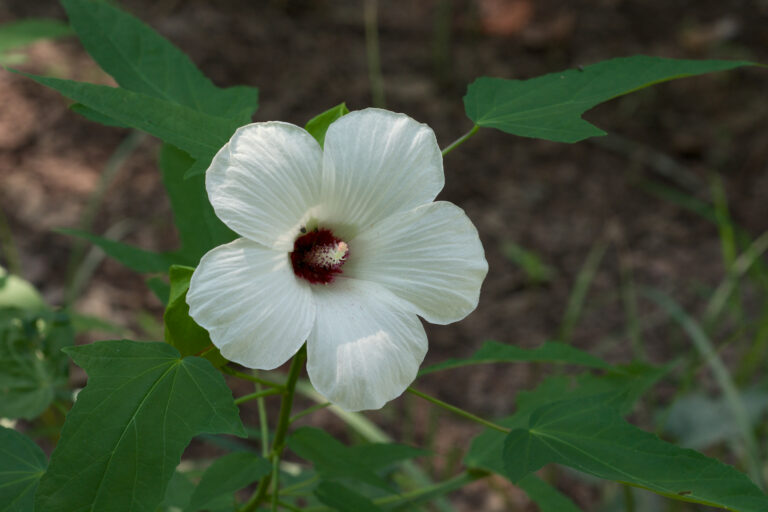This plant is not currently for sale. This is an archive page preserved for informational use.
The Halberdleaf Rosemallow is a big (3-6 feet), wet-loving herbacious perennial found in a few coastal and piedmont counties in NC but which is much more common in the Mississippi River valley and midwestern states. The plant consists of several glabrous, round, largely unbranched stems rising from the crown, with beautiful 5-inch blooms that are white to pale pink with a deep maroon throat, and a prominent central stalk bearing both male and female parts. Flowers open daily from below to above, blooming from mid-summer to fall, supporting hummers, bees and insects of many types. The common name refers to the presence of halberd-, or dagger- shaped 3-lobed leaves alternately arranged on the stem. Like the other Hibiscus’ which are found in wet places, these plants thrive in moist well drained upland gardens in full sun.

